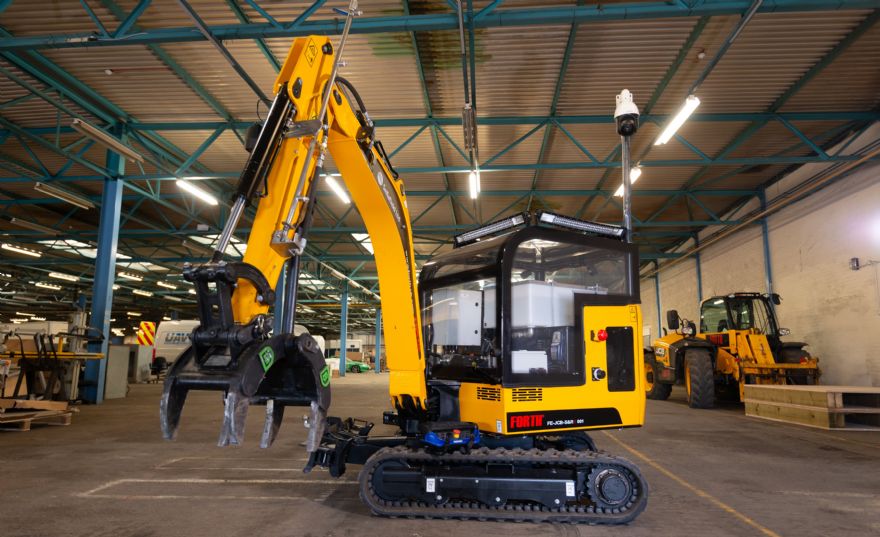
A remotely operated rescue robot, built to help with disaster recovery in hazardous industrial environments, has been developed by Cumbria-based
Forth, an advanced technology solutions specialist.
The company has developed the rescue robot for Sellafield nuclear site in Cumbria — in the event of an incident the robot can be sent in remotely and operated at a safe distance from a command and control centre.
It is built on a 1.6-tonne JCB compact excavator platform and it is fitted with robotics systems and wireless technology as well as specialist cameras and lights. The robot has the ability to tow a trailer with a fitted hopper that can disperse a bund of sand to contain any type of spillage.
Also fitted to the robot is an affixative spraying system that is can assist in the containment of a nuclear spillage. It also features a large grapple hook that will be used to move any obstruction the robot may come across.
A specialist 700-bar rescue tool similar to that used by the UK Fire and Rescue Services has also been fitted to the robot so it can cut through any hazards in its way and access the rescue zone.
A mobile command and control centre, fitted with live video streaming capability, will be towed to within a 150m radius of the rescue zone. The rescue robot will be deployed and will be able to be safely and remotely operated throughout its mission.
Whereas previous machines used by Sellafield have needed a tether, this is the first product of its type that can be remotely operated.
Remotely-operated rescue robotMark Telford, managing director of Forth, said: “This is a first for Sellafield to have this type of remotely-operated rescue robot. It is important for operators like Sellafield to plan for different scenarios and we are proud to have come up with such an innovative solution.
“We can adapt this technology for any industry or any organisation which would benefit from a rescue robot helping keep humans safe. We have developed this 1.6-tonne robot because it was what was required for this particular task.
“But we could develop a product of any size - it could be 10 tonnes, for example, if that was what was needed - and fitted with any type of tools for a range of tasks. It is the ability to remotely operate it from a control and command centre which makes it so versatile in a range of hazardous environments.”
Mr Telford said now the robot has been developed for Sellafield, he would welcome other organisations coming forward to Forth if they thought they would benefit from a similar type of technology.
“As a company we specialise in taking problem statements from clients, often involving protecting operators by distancing them from the workface. We develop new methods using new tech which provides a solution and allows the client to do what was previously not considered possible.
“When we have developed that technology - such as in this case for Sellafield - we want to use that learning and apply it to other solutions for other organisations across a range of different industries.
“We very much welcome organisations getting in touch with us and letting us know their problems so we can see if we can provide a solution.”
An ‘intelligent’ underwater autonomous survey robot fitted with sonar technology to detect and avoid obstacles so it can be used near critical infrastructure was recently successfully showcased in a live demonstration at Forth’s headquarters.
Autonomous aquatic inspection and intervention (A2I2) robot developed by a collaboration of companies from across the UK successfully completed its nuclear use case drop two trials at Forth’s Deep Recovery Facility in Cumbria in March.
The A2I2 collaborative R&D project, led by Rovco and supported by Innovate UK under the Industrial Strategy Research Fund, involves Forth, Rovco, D-RisQ, the National Oceanography Centre (NOC), Thales UK and The University of Manchester.
The project’s goal is to develop underwater autonomous vehicles which can improve safety and reduce the challenges of operating in hazardous environments, such as in ponds at nuclear sites.
Forth is also working with partners around Europe on the RESURGAM (Robotic Survey, Repair and Agile Manufacture) project and using its expertise to develop underwater friction stir welding technology to help make repairs to ships' hulls safer, faster and more cost-efficient than conventional welding.